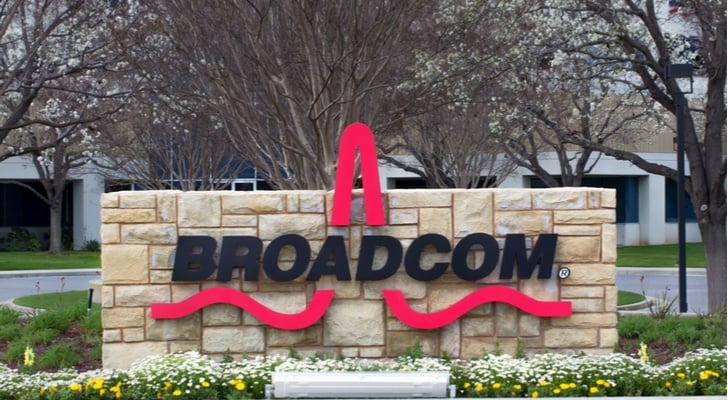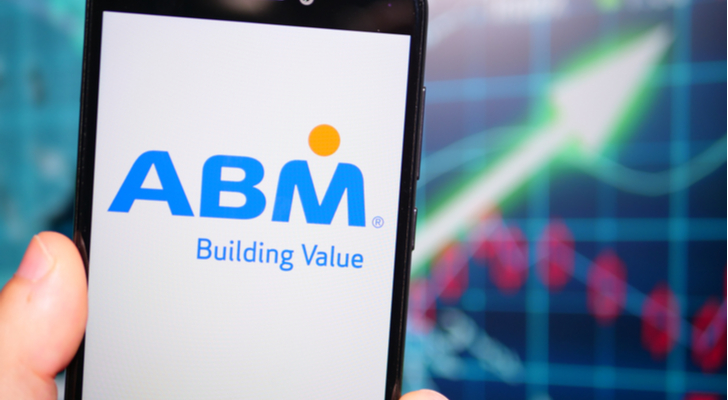
Image source: The Motley Fool.
Okta, Inc. (NASDAQ:OKTA) Q4 2019 Earnings Conference CallMarch 7, 2019 5:00 p.m. ET
Contents: Prepared Remarks Questions and Answers Call Participants Prepared Remarks:
Operator
Good day, and welcome to the Okta fourth-quarter 2019 earnings call. Today's conference is being recorded. At this time, I would like to turn the conference over to Mr. Bill Losch.
Please go ahead, sir.
Bill Losch -- Chief Financial Officer
Good afternoon. Thank you for joining us on today's conference call to discuss Okta's fiscal fourth-quarter and fiscal full-year 2019 financial results. I'm Bill Losch, chief financial officer at Okta. With me on today's call are Todd McKinnon, Okta's co-founder and chief executive officer; and Frederic Kerrest, the company's co-founder and chief operating officer.
Today's call will include forward-looking statements pursuant to the safe harbor provisions of the Private Securities Litigation Reform Act of 1995, including but not limited to, statements regarding our financial outlook, our market positioning and our ability to close and the benefits that may be derived from our pending acquisition. Forward-looking statements involve known and unknown risks and uncertainties that may cause our actual results, performance or achievements to be materially different from those expressed or implied by the forward-looking statements. Forward-looking statements represent our management's beliefs and assumptions only as of the date made. Information on factors that could affect the company's financial results is included in its filings with the Securities and Exchange Commission from time to time, including the sections titled risk factors and its previously filed quarterly report on Form 10-Q and its annual report Form 10-K that will be filed for the 2019 fiscal year.
In addition, during today's call, we will discuss non-GAAP financial measures. These non-GAAP financial measures are in addition to and not a substitute for or superior to measures of financial performance prepared in accordance with GAAP. A reconciliation between GAAP and non-GAAP financial measures and discussions of limitations of using non-GAAP measures versus their closest GAAP equivalence is available in our earnings release. You can also find more detailed information in our supplemental financial materials which included trended financial statement and key metrics posted on our investor relations website.
Now I'd like to turn the call over to Todd McKinnon. Todd?
Todd McKinnon -- Co-Founder and Chief Executive Officer
Thanks, Bill, and thanks, everyone for taking the time to join us today. We finished fiscal 2019 on a high note with our strongest quarter ever with total revenue growing 50%, subscription revenue growing 53% and calculated billings growing 52% year over year. We generated positive free cash flow of $4.8 million as our margin improved 7 percentage points year over year. Our results capped off a strong year of growth and significantly improving operating leverage for Okta.
We added a record 500 net new customers in the quarter, bringing our total customer count to over 6,100. And the number of customers who spent over $100,000 a year with us on an annual basis now totals 1,038, an increase of 50% year over year and a record add of 101. This momentum is being fueled by the rapid and concurrent growth of three massive technology trends: cloud, digital transformation, and security. Identity plays a central and critical role in each of these areas.
As organizations recognize this, they're turning to Okta because we can help them drive their most important initiatives that makes the most sense for their business. I'll share a few customer examples from the quarter that highlight the momentum that we're seeing. First, a Fortune 10 company was an exciting workforce and customer identity win for us in the quarter. Okta will be the identity standard for the company across its complex hybrid environment, improving access for its employees, partners and customers.
Okta was selected for its deep integrations with the company's existing solutions, including Oracle, Apogee and Pivotal. Okta will help reduce cost by replacing multiple legacy identity systems. Second, Cengage, the largest U.S.-based provider of teaching and learning materials for higher education, was a new workforce and customer identity deal in the quarter. Cengage is an industry leader offering more than 30 million monthly active users affordable access to quality learning materials.
Identity is a critical part of Cengage's transformation from a traditional print publisher to a digital company. They chose Okta's customer identity products because our platform can secure and centrally manage every type of user in their ecosystem, including students, professors and administrators. Their IT team chose Okta's workforce identity products, including Single Sign-On, Universal Directory, Lifecycle Management and Multi-Factor Authentication to help modernize and automate the employee provisioning process and secure their corporate data. Third, Tyson Foods, a Fortune 100 company, was a noteworthy upsell in the quarter.
Tyson initially selected Okta as the identity provider for its online partner portal to improve the authentication experience for its active network of over 10,000 partners and the company's team members. Most recently, Tyson expanded its deployment to include its 30,000 knowledge workers and 100,000 hourly workers. The company is transforming its business to better enable its employees with the tools they need to be successful. Recently, Tyson launched its Upward Academy Program which provides digital learning for its in-plant workforce.
Okta ensures users are able to access these resources easily and securely while reducing cost for Tyson. We hear more and more that every company is becoming a technology company. Whether in the diverse set of tools they use to empower their workforce or in the applications that they build to engage their customers, an organization's capacity for technology today is directly correlated to its success. It's our responsibility to maximize this capacity for our customers.
As we think about the best way to continue capitalizing on the broader market trends I mentioned earlier, we've identified a number of strategic priorities that we are focused on in the year ahead. Today, I'd like to discuss a few of these in more depth. Specifically, the world's largest organizations, the network effect of our platform, customer identity and security. First, we've talked a lot about the momentum we've had with our enterprise customers this year and you are seeing this materialize in our results.
But below the surface, we are approaching a tipping point with the largest organizations in the world, recognizing the need for secure and scalable identity solutions that connect to both their cloud applications and on-premise infrastructure. These organizations are acknowledging the critical role that the cloud will play in their environments. But this transition is understandably one that will unfold over many years. And despite the inherent complexity in their IT environments, they need to deliver a seamless experience to their users and ensure that the right people are able to access the right technologies at the right time.
This is why identity has become so important. Identity and access management is not new to these organizations but our customers recognize that legacy identity solutions weren't built for heterogeneous hybrid environments. They were built as part of a single vendor software stack which runs in direct conflict to organizations' need to use a broad and diverse range of technologies. This isn't a choice, it's a necessity.
And it calls for identity to be delivered on its own independent and neutral platform that can preserve an organization's ability to choose the applications and infrastructure that make the most sense for them. The Okta Identity Cloud is this platform. Customers choose Okta because we operate seamless and secure connection to the cloud. We connect to every technology our customers want to use, and we enable them to retire legacy identity solutions and can save them millions of dollars over time.
Our second strategic priority is strengthening the powerful network effects that are inherent in our platform. The foundation of this effect is the Okta Integration Network. With over 6,000 prebuilt integrations and our extensive technology partnerships, we believe we are better suited than anyone to securely connect an organization's users to the right technologies. And it's not just about the breadth of our integrations, it's also about how deeply we integrate.
We don't just provide access or provisioning through our integrations. In a number of scenarios, we make many of those applications function better and more securely by enabling and automating workflows between them. We see these drivers of our network effects as key differentiators for us, and we plan to continue investing in our platform and partnerships to further strengthen them going forward. It's in that spirit today I'm excited to announce our proposed acquisition of a company called Azuqua.
We signed an agreement to acquire them that is subject to certain closing conditions. We expect the transaction to close in Q1. Azuqua is a no-code, cloud-based integration platform that automates workflows between apps and services. As Okta's customers modernize their architectures and adopt new technologies, they are demanding more automation to manage and secure it at scale.
With the integration of Azuqua's technology into our platform, we plan to rapidly deliver more advanced use cases by connecting more apps and supporting more complex workflows. We are excited by how this acquisition can accelerate our innovation and enable deeper value for our customers. We are thrilled to welcome the Azuqua team to the Okta family. The third strategic priority I'd like to touch on is customer identity.
We believe that Okta is the only independent and neutral-identity platform. It is extensible, flexible and very easy for our customers and technology partners to connect to and build on. Because of this, everything we do to help an organization manage and secure its workforce can be leveraged to do the same for an organization's customers. We help companies like MLB, Albertsons and JetBlue secure their customer-facing applications and protect the identities of their millions of customers.
Our platform offers a very compelling alternative to them building identity themselves. We can deliver these same capabilities at massive scale more securely. And as they implement Okta as the identity layer to power their applications, they can conserve their scarce developer resources and get to market with their applications faster. As many of our customers use Okta for workforce identity as well, we believe we can uniquely serve as a single identity standard for them to manage and secure every type of user in their ecosystem.
Lastly, I'd like to address one final strategic priority for the year, security. The architecture for security is shifting from network-centric to identity-centric as the firewall can no longer protect the nucleus of the enterprise. The Okta Identity Cloud lays the foundation for a Zero Trust security framework which includes advanced capabilities like contextual access management and continuous authentication. We've made a number of investments in this area already, including our acquisition of ScaleFT, and we look forward to expanding these capabilities across our entire portfolio.
We are in a unique position to make Zero Trust a reality because of the detailed contextual data we gather around the user and the visibility we have into the threats that companies are facing. Stay tuned for more announcements in this area. Before I wrap up, one of my personal highlights was that Okta celebrated its 10-year anniversary in February. When we started the company, our bet on the cloud was far from a sure thing.
And while it's still relatively early, today, the movement to the cloud is inevitable. And it has now created huge opportunities in digital transformation and security that we're all so well-positioned to capture. I'm very proud of the role that Okta is playing and want to thank our employees, our partners and our customers who place their trust in us every day. As we begin fiscal 2020, we have momentum on our side.
I'm looking forward to seeing many of you next month at Oktane, our annual customer conference, where we will share a number of new announcements and more detailed plans for FY '20 and beyond. Thanks again for your time. And now I'd like to turn the call over to Bill to walk through our financial results. Bill?
Bill Losch -- Chief Financial Officer
Thanks, Todd, and thanks again to everyone for joining us. I'll first go through our results for the fourth-quarter and fiscal-year 2019 before discussing our outlook. We finished a successful year with strong fourth-quarter revenue totaling $115.5 million, growing 50% year over year. Subscription revenue totaled $108.5 million in the fourth quarter, an increase of 53% year over year, representing 94% of our total revenue, up from 92% in Q4 last year.
Revenue from outside of the U.S. grew 47% year over year and represented approximately 15% of our fourth-quarter revenue, consistent with Q4 last year. We continue to view our international business as a long-term growth driver, and we are investing to expand our international footprint. Moving on to billings.
Both current calculated billings and calculated billings growth for the quarter increased 52% over Q4 last year. We are pleased with calculated billings growth in our seasonally strongest quarter. Strength in billings continued to be driven by both new and existing customers across enterprise and commercial. Also while still in the early stages, we continued to see increased traction with our partner channel in the quarter with a significant year-over-year increase in the percentage of partner-sourced deals.
The total number of customers at the end of the quarter was over 6,100, up 40% year over year and a record 500 net new customer adds in the quarter. We made broad additions across our enterprise customer base, with customers with annual recurring revenue greater than $100,000 growing 50% year over year to 1,038, up 101 from the previous quarter. I would also note that a majority of these large customer additions came from new logos, demonstrating our increased traction landing deals in the large enterprise market. Our strong results were also driven by the continued success we are having in our existing customer base as our dollar-based retention rate for the trailing 12 months ended Q4 remained strong at 120%.
Before turning to expense items and profitability, I would like to point out that I will be discussing non-GAAP results going forward. Our GAAP financial results, along with a reconciliation between GAAP and non-GAAP results, can be found in our earnings release, as well as the supplemental materials posted on our investor relations website. Subscription gross margin continues to be strong at 82.4%, up 160 basis points versus the fourth quarter last year. Total gross margin was 76.4% in the fourth quarter, up 250 basis points year over year.
Gross profit was $88.2 million, up 55% year over year. Turning now to operating expenses. Sales and marketing expense for Q4 was $55.5 million, compared to $40.3 million in Q4 last year. This represents 48% of total revenue, an improvement from 52% in the fourth quarter last year and flat to Q3 as we continued to invest in capturing more of our large addressable market, winning more of the world's largest organizations and expanding geographically.
R&D expense in Q4 was $23.2 million, compared to $14.2 million in Q4 last year. R&D as a percentage of revenue increased to 20% from 18% in Q4 last year as we continued to invest in the Okta Identity Cloud platform and the Okta Integration Network. G&A expense was $14.5 million for the fourth quarter, compared to $11.6 million in the fourth quarter last year. G&A was 13% of revenue, an improvement from 15% for Q4 last year.
Our total headcount was 1,561 as of January 31, 2019, growing 33% over Q4 of last year as we continued to accelerate our headcount growth across the board to support our rapidly growing business. We have continued to see operating leverage in our model as we scale for durable growth and begin to capitalize on the investments we're making. Operating loss in the fourth quarter was $4.9 million, a margin of negative 4.3%, compared to negative 11.9% in the same period last year, a significant 760 basis point improvement. Net loss per share in Q4 was $0.04 with 110 million basic shares outstanding.
This compares to a net loss per share in Q4 last year of $0.08 with 101 million basic shares outstanding. Operating cash flow was $10.1 million in Q4. Operating cash flow margin was a positive 8.8%, compared to a positive 0.2% in Q4 last year, an 860 basis point improvement. Free cash flow was $4.8 million, positive for the second quarter in a row.
Free cash flow margin was 4.1%, an improvement of 690 basis points, compared to a negative 2.8% for Q4 last year. Our top-line outperformance, margin improvement and strong cash collections drove our solid cash flow performance. While we are encouraged by the performance in the quarter, we expect to see continued variability in cash flow margins due to ongoing fluctuations in working capital, the growth in our enterprise business and seasonal factors. Turning to the balance sheet.
We ended the fourth quarter with $564 million in cash, cash equivalents and short-term investments. This includes the net proceeds of $307 million from the convertible senior notes we issued in Q1. Quickly touching on financial highlights for the full fiscal year. A momentum that Todd discussed today, which is being driven by organizations moving to the cloud, improving the digital experience for their customers and strengthening their security posture combined with our strong execution today contributed to our outperformance across the board this past year.
Revenue totaled $399 million, an increase of 56% over full fiscal year 2018. Subscription revenue and calculated billings increased 57% and 55% year over year, respectively. At the same time, we demonstrated significant leverage in our operating model. Gross margin was 75%, up from 72% in fiscal 2018.
Operating loss margin improved to 10% of revenue from 24% of revenue last year. And finally, free cash flow was a negative $7 million or 2% of revenue, improving meaningfully from a negative $37 million or 15% of revenue in fiscal 2018. As Todd mentioned, we announced today that we have signed an agreement to acquire Azuqua for a total cash consideration of approximately $52.5 million which we expect will close in Q1 subject to certain closing conditions. I want to highlight that given the timing of the expected close, our guidance includes the anticipated impact for Q1 and the fiscal year.
In particular, we are forecasting minimal revenue impact and an approximately 200 basis point impact to operating margin in both Q1 and for the full year. We are looking forward to welcoming the Azuqua team to Okta and the long-term opportunity we expect this acquisition will bring to our platform and the acceleration of our Okta Integration Network. I would also like to remind everyone for your models that Q1 each year experiences operating margin seasonality due to the reset of payroll taxes and our annual worldwide sales kickoff. Also note that this year, Oktane has moved to Q1 from Q2 last year.
Moving on to guidance. For the first quarter of fiscal 2020, we expect total revenue of 116 to $117 million, representing a growth rate of 39% to 40% year over year. Non-GAAP operating loss of 26.5% to $25.5 million. Non-GAAP net loss per share of $0.22 to $0.21, assuming shares outstanding of approximately 112 million.
For the full-year fiscal 2020, we expect total revenue of $530 to $535 million, representing a growth rate of $33 to 34% year over year. Non-GAAP operating loss of $69 to $63 million. Non-GAAP net loss per share of $0.53 to $0.48, assuming shares outstanding of approximately 115 million. At our analyst day last October, we shared our five-year targets for strong, sustainable top-line growth and profitability.
Since that time, our conviction has only strengthened in Okta's growth opportunity. And I believe we are clearly on track to achieve these targets while investing in the strategic priorities Todd outlined today. In summary, we had a strong quarter and a great fiscal year. As you know, Okta recently celebrated its 10-year anniversary.
Okta has come a long way in the last decade, and we are particularly pleased with the growth we demonstrated in the last two years as a public company. A key reason for our success is that we made the right investments early enough to be one of the first to capitalize in the secular tailwinds of cloud, digital transformation and security. We are now approaching a tipping point with the world's largest organizations as they realize their need for a secure and scalable identity solution that legacy systems just can't fulfill. In order to capitalize on this shift, we are continuing to make the right investments.
We believe we are still in the early stages of our opportunity and plan to invest to drive further growth, both by adding customer-facing headcount and by continuing to innovate our platform with particular focus on enhancing our network effects and expanding security. I look forward to seeing many of you next month at Oktane. With that, Todd, Frederic and I will take your questions. Operator?
Questions and Answers:
Operator
[Operator instructions] And we'll take our first question today from Sterling Auty with JP Morgan.
Sterling Auty -- J.P. Morgan -- Analyst
Yeah, thanks. Hi, guys. So even if I back out the 2% hit to margins from the acquisition, I think the stock is reacting in after hours to a read that it looks like the margin guide is worse than what the Street had anticipated. The margin guides better but it's modestly better.
So I think some of the read that's happening is, geez, is it taking an extra level of investment to drive the same type of growth that the Street was already expecting, maybe things are getting a little bit tougher? If you could just kind of respond or give us your takes on that that would be helpful.
Todd McKinnon -- Co-Founder and Chief Executive Officer
Sterling, that's an interesting question. When I look at the world, I think that the opportunities are even getting bigger. And it's even more exciting. And the trends that we talked about in the past, cloud, more organizations going through their own digital transformation and organizations also having to rethink how they do their security architecture in a more identity-centric way, the trends are just getting bigger.
And we're super excited and we have our strategic plan that we're marching on and we're super excited about the opportunity and the growth prospects and how we can do that in a measured way that's long-term profitable as well.
Sterling Auty -- J.P. Morgan -- Analyst
All right. Can I have one follow-up? I'm sorry, go ahead.
Bill Losch -- Chief Financial Officer
No, I would just say -- this is Bill. I would add to that, Sterling, that these investments that we're making are consistent with that five-year model we presented at Investor Day. And we still feel like we're clearly on target to hit those operating margins of 16 to 19% by fiscal year '24. So this really is us seeing a tremendous market opportunity.
We've always benefited from making investments in a timely manner. That's benefited us in the past and we believe that's what's going to happen in the future.
Sterling Auty -- J.P. Morgan -- Analyst
Got you. And then one follow-up. Just you gave the description of Azuqua. But can you give maybe a real-world example how the technologies will work together? Because obviously I think it does expand your addressable market.
But just a real-world example would be helpful.
Todd McKinnon -- Co-Founder and Chief Executive Officer
Happy to do that. Yes, we're super, super, super excited about the Azuqua team joining Okta. And Azuqua is -- the business they were in, was basically integration platform as a service. So it's a no-code cloud-based integration platform that would help their customers automate data integration and workflows between different applications.
So what we're -- this is a technology acquisition for us. They did have many successful customers. The revenue from those customers is immaterial for our results. So this is really -- the way you should think about this is a technology acquisition.
And we're going to take this amazing technology that allows you to customize and extend any business process and we're going to focus it on our Lifecycle Management market opportunity. So as you know, our Lifecycle Management product is a very significant product for Okta and it's already the leading product in the market. It's fully cloud based, it comes pre-integrated to many, many applications in a very deep and expansive way. And the Azuqua technology is -- you can think about it as taking that breadth and depth of integration to a whole new level.
Because you'll be able to talk to any system, any identity attribute in those systems and fully control with very little code with that high degree of expressibility the business process and the workflow that you want to automate. So a very concrete real-world example for you is let's say you're a global company that has several disparate HR systems and several hundreds of applications on the back end. As you know, from our businesses at work report we released a month or so ago, that our largest customers have, on average, hundreds of applications, right? And imagine you're this large company trying to integrate the back ends of all these services in terms of the identities and you have different HR processes and different subsidiary companies and different back end directories that those newly hired employees need to be copied to. Azuqua and that technology can -- lets you basically express any type of workflow between those systems that your company or your industry requires.
So that's why it's really going to take the Lifecycle Management product and really supercharge that and really help us capture that big opportunity.
Sterling Auty -- J.P. Morgan -- Analyst
Got it. Thank you.
Todd McKinnon -- Co-Founder and Chief Executive Officer
Thanks for the question.
Operator
Next, we'll hear from Alex Henderson with Needham.
Alex Henderson -- Needham and Company -- Analyst
So it seems pretty clear to me that you guys are really hitting an inflection point in terms of reaching a critical scale to pull away from the competition and become the de facto standard in the space. Could you talk a little bit about what you're seeing relative to the competitive dynamics with other players? What your win rates look like? A little bit about whether you're seeing less competition or more competition? And then second follow-up question would be, if you could just give us a little bit more granularity on what accelerated investments you're planning on the international side?
Todd McKinnon -- Co-Founder and Chief Executive Officer
It's super interesting. If you look at the business overall, the main thing that's kind of changed in the last, I would say, 18 months is that we're in more deals. So there are basically more deals happening and are happening faster. These are identity selections and it's a big -- it's a strategic investment for these companies.
You're talking about how they're going to accelerate their journey to the cloud, how they're going to take advantage of digital transformation and be secure. So they're important decisions they make. So they look at the different players. And that's been consistent, whether it's a legacy vendor versus a newer vendor or it's a platform vendor versus what we are which is independent and neutral platform.
So they look at all the players and that hasn't changed. And our win rates are very consistent, like consistently what they have been. So that's great. The difference I would say is that there's more deals and they happen faster.
And I think there's a lot of underlying dynamics that are driving this. But one of the most significant dynamics is that with our success in our customer base, when you see the customer examples we talk about, like this time, it was Tyson Foods or the Fortune 10 healthcare company we talked about, these big successful stories, basically the word is out in the buyer community that Okta can help you be successful quickly. It's a broad platform that can help you with everything from cloud adoption to digital transformation to security. And these people are smart.
They talk to their peers, they go to a new job, they talk to people at their old jobs and that our reputation for success I think is a really accelerating thing. So it's a pretty fortunate position we've been in. We've worked hard to build up this reputation. I think now we're reaping the benefits of it.
Frederic Kerrest -- Co-Founder and Chief Operating Officer
And Alex, what I would add -- this is Frederic, what I would add to that is if you look at why we win a lot of new customers and you see the growth in not only the customer base but the number of customers paying us over $100,000 a year, what you really see is that focus on customer success that we talk about, which I don't think is natural in enterprise IT generically and specifically in the history of enterprise identity. Vendors have not done a terrific job of making customers successful. And I think you see that changing and specifically in our customer base and then in the prospect base. For example, we put out two press releases just this morning about successful deployment at both Hitachi and Brink's.
And if you think about, if you're a CSO of a Fortune 500 company and you're thinking about what solutions you're going to go with, not just to buy technology but to be successful with these deployments, you look to some of these examples. I mean, the CIO -- the global CIO of Hitachi in a press release talks about the successful deployment to 300,000 employees around the world. And how quickly he got the technology up and running and found that true value in the solution he was buying and the company, Okta, he was partnering with. And I think you're starting to see more and more of that as we're getting to that inflection point, as you said a tipping point, as we're starting to get penetration into the world's largest organizations.
These folks are looking for partners that they can work with to really be successful and I think they're finding that in our company which we're very fortunate with.
Bill Losch -- Chief Financial Officer
And then I think, to your question as it relates to international, I think to think about this is that the investments we're making in innovation that we talked about. So the investments we're making in the innovative areas that Todd was focused on, enhancing our platform, our network effects, enhancing our security, are all going to benefit us worldwide from the standpoint that it's one platform, and those impacts will benefit us both U.S. and international. So that -- those investments will benefit international.
I think specific to international, to your question, we are investing in go to market. We are investing in more customer-facing headcount. We are investing in the partner channel and we're starting to see a lot of traction with the partner channel internationally. When I talked earlier about the fact that we're seeing more sourced deals coming from the partners, a lot of that was international.
When I was talking about the fact that the partner channel were getting that traction. A lot of it is from the implementation of partner -- or partners doing implementations for our customers. So those are all the areas that we're focused on investing internationally.
Alex Henderson -- Needham and Company -- Analyst
Great. We certainly buy in to your new success. Thanks.
Todd McKinnon -- Co-Founder and Chief Executive Officer
Thank you very much. Nice to hear from you.
Operator
Next, we'll hear from Rob Owens with KeyBanc Capital Markets. OK, we're not getting a response from that line. We'll move to Heather Bellini with Goldman Sachs.
Heather Bellini -- Goldman Sachs -- Analyst
Great. Thank you very much. Can you hear me? Hello? Hello can you hear me?
Todd McKinnon -- Co-Founder and Chief Executive Officer
Loud and clear. We can hear you.
Heather Bellini -- Goldman Sachs -- Analyst
Oh,perfect. Sorry about that. So two questions. First, security is a platform and the notion of Zero Trust has been something that CIOs have wanted for many years but haven't been able to achieve.
I guess, Todd, what's giving customers the confidence that they can finally achieve that goal? And is there a way for them to think about getting rid of some of their legacy technology as the notion of what you need to secure changes as you were talking about in your opening comments? And then I have one follow-up.
Todd McKinnon -- Co-Founder and Chief Executive Officer
I think that the whole Zero Trust is a good example of you were to look at the opportunity for Okta several years ago, you wouldn't have necessarily seen it be as broad as it's become in the whole security area. So talking about what that means in detail there, I think it's helpful to understand why we're so bullish about the market opportunity and why commensurately we're really investing to make sure we can capture it. So it's a good case study. So if you think about Zero Trust, the concept is -- essentially, Zero Trust, the term means don't trust your network, right? The old world was like you have the network perimeter and you put all your security rules and your firewall and you had a VPN outside of that and everything outside was not secure and everything inside was insecure.
To this, where you don't -- move into a Zero Trust world is where you don't trust that perimeter. And what it means is that you have to do security all the way down to the individual level. So you have to have a system that can make sure it can identify the person, the device, the source of the access, the access patterns, what past access patterns have looked like and how they measure with what the person is trying to do now and to make a real-time high fidelity security decision that both has good user experience, it doesn't block the wrong things and also keeps you from doing bad things. So that's the idea.
And you mentioned like they've tried to do this forever and why it hasn't happened. I would say two things. One is that with the move to cloud, reaching the, really, the tipping point where it is now and people forget. So the global IT market is $1 trillion.
But cloud is only 20% of that. It's only about $200 billion if you add up all the infrastructure as a service, all the SaaS apps, all that stuff. It's still only 20%. So we're basically at a tipping point where companies have so much cloud now that they really have no choice.
They can't trust the perimeter because 20% of things aren't in their perimeter. So it's like a requirement thing, it gets to a tipping point, you have to manage this. And the second thing is there are -- there have been demonstrated better ways. I mean, people have seen that if you get a good identity system like Okta, you have a system of record.
You have a nice pivot point to build that around. So you have a good system of record, that identities are integrated together, you can make a policy decision based on what people are doing, and it's possible. So I think the combination of the problem reaching kind of a fever pitch and then solutions, identity-centric solutions like Okta, I am obviously biased, I think we have the best one, delivering that solution, that's what's seeing it really tip.
Heather Bellini -- Goldman Sachs -- Analyst
Great. And then just one quick follow-up based on everything you said which we agree with, are your initial lands getting larger?
Bill Losch -- Chief Financial Officer
Yes, Heather, they are. So if you look at the deals that we did last quarter -- actually, last couple of quarters and you look at the metric where we show those customers paying us more than $100,000 a year, you'll see that those numbers have grown pretty significantly, 50% this past quarter. But what's also happening is within those numbers, most of that growth or most of that additions are net new logos. So we're getting bigger deal sizes initially coming in.
Frederic Kerrest -- Co-Founder and Chief Operating Officer
And I think just adding to that, Heather, I think what's really exciting is you see this happening not only across verticals but across geographies. And now the platform is becoming very, very rich. So all the different products that we can help our customers with, not only in workforce identity but also in customer identity and access management means there's a lot of different landing points. So we talk about -- you heard in the prepared remarks about that Fortune 10 company.
They landed with Workforce and then they found ways to augment what they were doing with Customer Identity and Access Management. You heard about Cengage which was the other way. They were looking to solve a Customer Identity and Access Management problem and then at the same time realize the opportunity to augment what they were doing on the workforce side. And then finally, Tyson, you see that they upsold themselves from a workforce to include everything they're doing with partners.
And I think these are just very good examples of a couple of things. First of all, we are seeing larger and larger lands. We are, No. 2, able to do that with a number of different ways, different products, different use cases.
And then No. 3, I would just echo what Todd said, it is very early. I mean, we are just getting started with the world's largest organizations. And we're going to invest to that in the quarters and the years ahead because the opportunity to help these companies really transform how they think about cloud, how they think about the interactions with their customers as every company has to become a technology company and the underpinnings of security.
these are huge opportunities and ones that we're very, very excited about. And again, the results are good and we're very fortunate and we're happy with those results. But I think the times ahead are going to be very, very exciting for the business and for our customers.
Heather Bellini -- Goldman Sachs -- Analyst
Thank you so much.
Todd McKinnon -- Co-Founder and Chief Executive Officer
Thanks, Heather .
Operator
Next, we'll hear from Lisa Franchi with Morgan Stanley.
Lisa Franchi -- Morgan Stanley -- Analyst
Great. Thanks for taking my questions. Todd, thanks for the color on the Azuqua acquisition. I know you said you're going to integrate it into the Lifecycle Management products.
I'm wondering if you could just maybe talk a little bit more about how you plan on monetizing it? Is it going to be a stand-alone solution or is it just something that will enhance the Lifecycle Management products?
Todd McKinnon -- Co-Founder and Chief Executive Officer
So it's a great question. I think that it will definitely be something that enhances the Lifecycle Management products. And there's a possibility that we haven't made the decision yet, but there's a possibility over time as we get integrated and customers see the benefit of it, that we'll actually break it out as a separate product, independent of Lifecycle Management. But the basic execution is Enhanced Lifecycle Management and make what's really an industry-leading product even more valuable for customers.
And we'll be able to drive more penetration to the customer base, help us land new customers and really keep that strategic advantage going there.
Lisa Franchi -- Morgan Stanley -- Analyst
OK. Thanks. And just a follow-up for Bill on the conversation on the operating margin guidance. So we have your guide for FY '20 and then we have your guide for FY '24 which you're still on track for.
But how should investors think about how margins will trend beyond FY '20 through FY '24? Is it more back end loaded in terms of leverage? Or do we think sort of like a study trend of leverage beyond FY '20 through FY '24?
Bill Losch -- Chief Financial Officer
I think the way to think about it, Melissa, is that we see the market opportunities here, especially as we talk about the worldwide -- or the world's largest organizations, it's early. So we think that there's a big opportunity. It's early. We're making investments to realize that.
So I think that I wouldn't say that the operating margin is going to be back ended. But I also wouldn't say that it's going to be linear between now and then. So I would think about it more in that terms. I think that we will start to -- we have historically seen leverage in our model.
We demonstrated that last year with the significant improvement we made in operating margin, our non-GAAP operating margin and free cash flow. We have that inherent in our model. So you're going to see that margin improvement. You're going to see that leverage coming through.
But I wouldn't say it's going to be linear between now and then.
Lisa Franchi -- Morgan Stanley -- Analyst
Makes sense. Thank you very much.
Operator
Our next question will come from Rishi Jaluria with D. A. Davidson.
Hannah Rudoff -- D.A. Davidson -- Analyst
Hi, guys. This is Hannah Rudoff on for Rishi.
Todd McKinnon -- Co-Founder and Chief Executive Officer
You're coming through pretty faintly. Maybe turn your volume up, or...
Hannah Rudoff -- D.A. Davidson -- Analyst
Yeah. Can you hear me now?
Todd McKinnon -- Co-Founder and Chief Executive Officer
That's better. That's better. Thank you.
Hannah Rudoff -- D.A. Davidson -- Analyst
OK. Just first question on the three tailwinds you were talking about, cloud, digital transformation and security. I was wondering abroad if you were seeing these as pervasive as you're seeing them domestically? Or if you're seeing them at a different pace than they are domestically?
Frederic Kerrest -- Co-Founder and Chief Operating Officer
Yes, absolutely. Thank you for the question. I think these are global trends. I mean, people move into cloud, people thinking about how they can better interact with their customers and partners and obviously, the security threats and opportunities out there, these are global trends.
They're happening everywhere. In terms of pace, I think you do see that North America is a little bit of ahead in terms of adoption of cloud, adoption of some of these modern technologies. But Europe and Asia-Pacific are picking up quickly. We see that in our business.
We see that in the customer base. And it's not just small and medium businesses. The world's largest organizations are international. If you look at traditionally very successful customers of ours like ENGIE, one of the largest energy companies in the world based in France and the success they're having with modern technology is right there.
So as an overall trend, I think there might be a little bit of lag from North America to the rest of the world. But it's not significant. And again, everyone is going to be taking advantage of these opportunities. It's just much better technology, much better solutions for the customer, the cost is lower, the chance of success is higher and the return that they get on those investments are much quicker.
So there's a lot of reasons you're going to continue to see that. But again, it's not -- we talk largely about the private sector on this call but as you know, the public sector is the same. The federal, state and local governments not only in North America but internationally have been great businesses for us. It's early but there's a lot of opportunity and we're very excited about that.
Hannah Rudoff -- D.A. Davidson -- Analyst
Great, that's really helpful. And then second, it's nice to see such large growth in your enterprise customer, and I was wondering if you could talk about how the go to market strategy is different on that side?
Frederic Kerrest -- Co-Founder and Chief Operating Officer
Yes, absolutely. I mean, we have historically have done a good job of not only accelerating in the commercial segments, so small and medium business and in enterprise. But I think what's really changing now is you're starting to get this tipping point we're talking about where as large organizations are understanding that there is a lot of value for them, we are investing across the board in all of our go to market. But in particular, in enterprise and in named accounts, we are hiring more account executives, more sales engineering, more support and those dividends are going to pay off very quickly.
I think we're also benefiting from the fact that a lot of our senior sales executives have seen a lot of success in the last quarters and years, and they start talking to their friends from past jobs. And frankly, we're starting to see more and more of the best talent we've ever seen on the go to market side be attracted to what we're doing. And as we grow, I think we're going to continue to up level the quality of the team which I'm thrilled about. We just had our worldwide sales kick off a couple of weeks ago for the team and it was very, very exciting.
The momentum was palpable. We had more than 50 partners who paid to attend the event and to meet our sellers and make sure they were building those relationships. And I think you're just going to continue to see that acceleration. I'm very excited about it and I'm very bullish on it.
Hannah Rudoff -- D.A. Davidson -- Analyst
That's good to hear. Thank you.
Operator
Terry Tillman with SunTrust Robinson Humphrey has our next question.
Terry Tillman -- SunTrust Robinson Humphrey -- Analyst
Hey, Todd, Frederic and Bill, nice job on the quarter. By the way, can you hear me?
Todd McKinnon -- Co-Founder and Chief Executive Officer
Terry, thanks for joining us.
Terry Tillman -- SunTrust Robinson Humphrey -- Analyst
Great, awesome. Yes. So I love the businesses at work report, waited with bated breath to read that. So it's great read.
I noticed hybrid IT mentioned in there and you had some visuals and some data points around hybrid IT. Todd, I've heard you today, talk about hybrid IT earlier in your prepared remarks. What I'm curious about is in new business that's coming your way, how much of it now has use cases that are hybrid IT focus in terms of securing hybrid IT as opposed to just it's a cloud -- straight up cloud deal for just securing cloud apps? And then I have a follow-up?
Todd McKinnon -- Co-Founder and Chief Executive Officer
100% have hybrid. And it's just the degree to how much hybrid. But -- so especially in the world's largest organizations, hybrid is more important. So that's why over the past few years, we've invested so heavily in making sure the Okta Identity Cloud is integrated to everything, not just SaaS apps but SaaS apps and VPNs and network security systems and ever different kind of device and every different kind of development platform.
Because the one thing about the world's largest organizations, when they want to do digital transformation or be secure or move to the cloud, they want to do it in the way that they can be comprehensive and cover their whole enterprise and not just one part of it. So that's why our whole integration strategy is so critical. And even if you look at Azuqua, right, one of the things, as I've talked about Azuqua on this call, I haven't mentioned it, which is actually very important. It's also -- when you think about integrating Okta to various different systems and the depth and the way you can model those integrations, Azuqua enables us to do that at a much deeper and more comprehensive level.
It means that this benefit of being integrated to everything more deeply accrues to the customers even more. So it's about connecting everything. It's about letting them do what they need to do, whether it's on-premise or in the cloud and it's kind of showing up on our results. We're very excited about it.
Terry Tillman -- SunTrust Robinson Humphrey -- Analyst
Great. And Bill, maybe just on free cash flow. I'm not necessarily asking for pinpoint free cash flow guidance, but if you want to give that that would be fine too. But I'm just kind of curious to see, I assume that will look a lot better than the operating losses just because of the billings progression but can you talk at all about how to think about free cash flow for FY '20?
Bill Losch -- Chief Financial Officer
Yes, Terry. We expect to be free cash flow positive for this fiscal year for fiscal year '20, slightly better than breakeven. So we will be -- we do plan to be free cash flow positive for the year. There may be some variability in the quarters.
there typically is as we've talked about before because of working capital fluctuations and also because we do have seasonality in our billings. The billings collections have some seasonality to it. So there may be quarter-to-quarter impacts. But our expectation right -- our expectation is to be free cash flow positive this year.
Terry Tillman -- SunTrust Robinson Humphrey -- Analyst
All right, thanks. Nice job.
Todd McKinnon -- Co-Founder and Chief Executive Officer
Thank you very much. Appreciate it.
Operator
Our next question comes from Andrew Nowinski with Piper Jaffray.
Andrew Nowinski -- Piper Jaffray -- Analyst
Great. Thank you and congrats on a nice quarter. So I want to go back to one of the comments that Bill made in the script about partner-sourced deals contributing nicely. Maybe if you can just elaborate on the traction you're seeing within your partner network and perhaps rank order how we should think about the ones that will have the largest contribution in fiscal '20?
Frederic Kerrest -- Co-Founder and Chief Operating Officer
Yes, absolutely. I'll take that. Thanks, Andrew, for the question. I think just to start with, we're very excited about everything we have going on with the partners.
So partners mean different things for different companies and different people and their uses global. So just to kind of level set again for everyone, the way we think about partners is first of all, there is a large group of system integrators starting with the global system integrators, organizations like Deloitte, Accenture, PwC that are starting to really standardize not only their identity and security practices but also their digital transformation practices around Okta and they were some of the biggest sponsors of our sales kickoff a few weeks ago. Secondly, we think about a lot of these technology partners that we have, whether they're other Software-as-a-Service or technology infrastructure partners, organizations like Palo Alto Networks or some of these larger broader strategic partnerships we have with organizations like VMware where they start to provide a lot of value in terms of not only introductions into new accounts but also in that joint solutioning where you can really provide value to the customer. I was in November in France and Paris for our office opening there and the European head of VMware was very excited about all the large opportunities that we can get into together, where they're looking for this best of breed joint solution for identity and mobility.
And I think it's really just a testament to the fact that these are worldwide standards that are going on. And then finally, the last thing I would point to is you're starting to see more and more partners that are integrating around the Okta service. So whether it's companies that are already out there, that are gaining traction like Shape Security and BetterCloud that are looking to integrate with Okta or brand new organizations that are very early on their lifecycle who are actually building the Okta Identity Cloud right into the middle of their solutions. I mean, these are huge opportunities for us and as we continue to invest in the platform, you're going to see more and more of that.
Specifically about this last quarter, in Bill's prepared comments, I mean, I think it plays to all of those pieces. But in particular, as more and more organizations and system integrators are looking to build practices, they're also bringing us in to organizations. And as you know, the world's largest organizations, any Fortune 500, Global 2000 has relationships with one if not all of the GSIs. And I think we're really just starting to see the inflection and tipping point there.
And I think that in the times ahead, we're going to see continued momentum there and that's really going to provide for a durable and long-term growth in those large organizations. And finally, when you think about the international expansion, we just can't be everywhere ourselves and when there's so many different countries in Europe and Asia-Pacific with their own cultural standards, having strong partner networks to really help us not only expand into those countries but make those companies successful because we're very, very good at that and very focused on that customer's success, that's part and parcel of what we do. So sorry, kind of a long-winded answer but there's a lot of complexity there. We want to make that as clear and simple for folks as possible.
Andrew Nowinski -- Piper Jaffray -- Analyst
That's great. And then maybe just a quick one for Bill. Looks like DSOs increased significantly in the quarter. Just wondering if that was simply due to linearity or if there are any large deals that might have perhaps pulled into the January quarter?
Bill Losch -- Chief Financial Officer
No, we actually had a very strong cash collection in the quarter. What you're looking at is really that a lot of the billings came at the tail end of the quarter. So it's really the linearity at the tail end of the quarter which is driving that.
Andrew Nowinski -- Piper Jaffray -- Analyst
Got it. Thank you very much, guys.
Operator
Our next question comes from Taz Koujalgi with Guggenheim Partners.
Taz Koujalgi -- Guggenheim Partners -- Analyst
Hey, guys. Thanks for taking my questions. Two questions. First one, if I look at your services revenue, they usually go up quite a bit from Q3 to Q4.
They went down sequentially in this quarter. Any comment on what drove that?
Bill Losch -- Chief Financial Officer
Yes, I think what you're looking at is a continuing trend and traction that we're seeing with our implementation partners of doing the services which we think is a very positive thing. We especially saw it internationally. And actually, we're seeing tracking internationally with our services partners, faster in the lifecycle than we heard -- saw U.S. when U.S.
was the same size. So it's a positive development for us and something we've been working toward as far as investing in the partner channel and working with our partner implementation or our implementation partners to do more of those services for us.
Taz Koujalgi -- Guggenheim Partners -- Analyst
Got it. And then second is just the question about the deals getting -- the initial deals getting larger. Can you clarify if that's a function of your initial customers being bigger now versus prior or is it a function of customers buying more products upfront?
Frederic Kerrest -- Co-Founder and Chief Operating Officer
Yes, thanks for the question. I think it's a combination of both of those things. Certainly, larger organizations just have much larger challenges, opportunities and budgets that they can tap into as they do that. That's certainly the case.
But you have to remember in a Software-as-a-Service model like ours, we're releasing software dozens and dozens of times a year, 40 releases a year means there's a lot of new software coming out, more features, more functions which means more use cases that we can help customers solve. So there are really more and more complex environments that we can integrate with and even mid-market or small businesses find more and more ways we can help them. So it's a combination of the 2, bigger companies coming our way and companies of all sizes finding more ways they can use the Okta Identity Cloud off the bat.
Taz Koujalgi -- Guggenheim Partners -- Analyst
That's helpful. And just one last one, if I could. How do you think about the upsell or the retention rate going forward now that you're landing with bigger deals initially?
Frederic Kerrest -- Co-Founder and Chief Operating Officer
Well, I think I would point to the dollar-based net retention rate which you've seen is consistent with Q3 at 120%. So you're really seeing that customers are landing on one side with bigger and bigger deals but also expanding across both more use cases and more products. And I think that's a trend that we expect to continue to see as the company grows and then the opportunity expands.
Taz Koujalgi -- Guggenheim Partners -- Analyst
Thanks, guys. Very helpful.
Operator
We'll now hear from Rob Owens with KeyBanc Capital Markets.
Mike Casado -- Keybanc Capital Markets -- Analyst
Hey, guys. This is Mike Casado on for Rob Owens. My apologies for the user error on the first go around. I want to double-click on the last question that was asked relative to the larger initial deals and the broadening opportunity.
With the strength you saw this quarter, how did the internal versus external business perform relative to your initial expectations?
Frederic Kerrest -- Co-Founder and Chief Operating Officer
I think it's consistent. I mean, I think you'll continue to see very strong growth across the board, across the entire business but also across the two large sets of use cases that you talked about. Workforce, traditional enterprise identity management workforce employees and customers and contractors continue to do very, very well, very strong business but as this customer identity and access management, obviously, those are paired very closely to more and more cloud in the environment and obviously digital transformation. And as every company has to become a software company and a technology company, every company has got to provide much better interfaces for their customers, their partners, their vendors, their suppliers, you're going to continue to see more and more opportunities in customer identity management which traditionally has been a build your own.
So different dynamics in those two markets but I think that they're both doing very, very well and continue to grow which we're very excited about.
Mike Casado -- Keybanc Capital Markets -- Analyst
OK. And then circling back to the Azuqua acquisition. Todd, you previously talked about the prebuilt integrations as really being the key source of competitive differentiation versus Microsoft. In the past you've also drawn a line in the sand just in terms of being two to three years today ahead of that competition.
How far ahead are you guys now and how did that acquisition change that gap?
Todd McKinnon -- Co-Founder and Chief Executive Officer
I think it's -- I think the big change is not in the connectors per se or the integrations per se. It's how you can orchestrate those around the business process. So it's one thing to have a very expansive connector into something like Workday, right? So we have, by far, the best connector to Workday in the industry. It supports all the fields.
It supports all the events inside of Workday into a business process. And we're, as you mentioned, multiple years ahead and we've maintained that lead in terms of like the number of connectors and the breadth of those connector, the richness of the data in those connectors. So what Azuqua really brings, it's something different. It's the way you can kind of chain those connectors together, right? So that you could say for example, with a very easy, not a lot of hard detailed development but in a very easy way, you can say, hey, listen, here are the steps that have to happen when a new employee gets hired, get all the data from workflow, do some simple processing on it, create a user over here with this type of data enhanced or do something specific in this other application where you want to copy files around or you want to change group permissions.
So it's like how you chain those connectors together. So it's almost like it's like while the competition is kind of trying to catch up on the connectors, we're changing the game by changing what it means to link those connectors together in a process. I think that's the way -- that's the most helpful way to think about it.
Mike Casado -- Keybanc Capital Markets -- Analyst
I totally understand. That's helpful context, Todd. Thank you. That's it for me.
Todd McKinnon -- Co-Founder and Chief Executive Officer
Sure. Thanks for bringing that up.
Operator
Our last question will come from Jonathan Ho with William Blair.
Jonathan Ho -- William Blair -- Analyst
Hi. Congratulations on a strong quarter. I just wanted to maybe get a quick update first of all on the ScaleFT acquisition and just maybe where we are with that?
Todd McKinnon -- Co-Founder and Chief Executive Officer
So ScaleFT, for folks that may be new, is a company that we acquired last year and they were -- their product was a product around securing access to servers. So if you have a bunch of servers in your data center or you're infrastructure as a service cloud provider, you use ScaleFT to do the login and the security and the user management for administrators login to those servers. And to do that, you have to be very good at Zero Trust security. So you have to be very good at detecting who the user is, who the -- what the security posture of the user's device.
Because an administrator logging into servers is a sensitive thing. So we're very excited about this acquisition for a couple of reasons. One is that we can take that technology, that Zero Trust technology and broadly apply it across our entire portfolio, from Single Sign-On to Multi-Factor Authentication and the other workforce products and even customer identity products. So that's exciting, just the technology opportunity.
And we are also excited about some new announcements we're going to make around the product category at our Oktane conference coming up in April. So it's a little bit of a stay tuned for that but it's -- we're pretty excited about what we can do there in terms of new products.
Jonathan Ho -- William Blair -- Analyst
Excellent. And then -- and just one last one on Azuqua. What kind of investments do you need to make in the business in order to scale it? And what's sort of the timeframe for us to see Azuqua integrated into the offering?
Todd McKinnon -- Co-Founder and Chief Executive Officer
One of the -- we -- so it's interesting. When you think about how this -- what our approach here on this one was. First of all, we -- our main philosophy on R&D is do things organically. So we want to innovate.
We have a very strong track record of innovating, it's one of our core values. You basically created this category


 Source: Mike Mozart via Flickr (modified)
Source: Mike Mozart via Flickr (modified)  Source: Shutterstock
Source: Shutterstock 
 Source: Shutterstock
Source: Shutterstock  Source: Shutterstock
Source: Shutterstock  Source: Dwight Burdette via WikiMedia Commons
Source: Dwight Burdette via WikiMedia Commons  Source: Jerry Landers via Flickr (Modified)
Source: Jerry Landers via Flickr (Modified)  Source: Shutterstock
Source: Shutterstock  Source: Montgomery County Planning Commission via Flickr (Modified)
Source: Montgomery County Planning Commission via Flickr (Modified)  Source: a.dombrowski via Flickr
Source: a.dombrowski via Flickr  Source: Shutterstock
Source: Shutterstock  Source: Mike Mozart via Flickr (Modified)
Source: Mike Mozart via Flickr (Modified)  Duality Advisers LP bought a new position in Nucor Co. (NYSE:NUE) in the 4th quarter, HoldingsChannel reports. The firm bought 63,770 shares of the basic materials company’s stock, valued at approximately $3,304,000.
Duality Advisers LP bought a new position in Nucor Co. (NYSE:NUE) in the 4th quarter, HoldingsChannel reports. The firm bought 63,770 shares of the basic materials company’s stock, valued at approximately $3,304,000.  Source: Company
Source: Company
